
BJJ has come to a state where every time someone goes to pull guard they’re ridiculed. This behavior is highly reminiscent of how people acted towards leg locks not so long ago. The BJJ community is the habit of constantly having a black ship among techniques. Pulling guard is actually something that is very specific to the sport, and should be something grapplers are proud of. Despite what some people might think, a guard pull is a highly technical movement, and there are more ways than one to do it. there are a few really fun and effective ways of pulling guard besides the regular one and the jump guard. Let’s explore those a little bit.
To Pull Guard or Not?
Deciding to pull guard as your number one move from the feet, is not a wrong thing. Pulling guard is a perfectly valid technique, especially in competition. Developing a takedown game takes time and dedication. On top of everything, not everyone that comes to Jiu-Jitsu has a background in other grappling martial arts. For those without Judo or Wrestling skills, the guard pull is the perfect option to get the fight to the ground. PPlus it is a BJJ-specific technique that no other arts have. As such, it is a great advantage over competitors with different backgrounds.
The takedown game in Jiu=Jitsu is a highly diverse one, due to how open the sport is. Apart from just a few moves that are forbidden only under certain rule sets, everything else is a go. You can grab the legs, you can manipulate collar, sleeves, work form a clinch, a headlock or do arm drags. As long as you’re comfortable and efficient with it, anything is going to work. So why should you be afraid to pull guard, even though it is perfectly legal at every level? The guard pull fits the takedown game perfectly, despite not being a move that results in points. Even though people do not see it as one, it is definitely a takedown that offers ample attacking opportunities.

The Guard Pull’s Bad Reputation
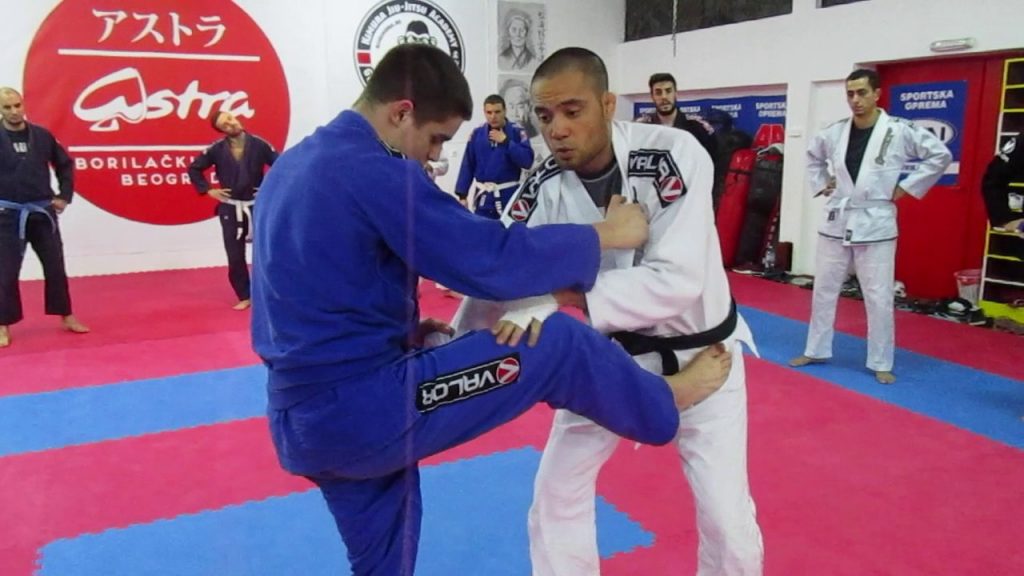
With the guard pull, it is pretty much the same situation. Attempting to pull guard as a main offensive option from the feet, is probably going to get you branded as a coward. However, doing the same move after attempting a takedown or throw, somehow makes it okay. It is one of the few idiosyncrasies of Brazilian Jiu-Jitsu that no one can explain.
In truth the bad name guard pulls have, just like with leg locks, is complete without merit. There is nothing cowardly about going to a specific attacking position when you’re grappling. The guard pull is just a way of entering the guard. So, even though it is not technically a takedown, it is still an efficient and high-percentage move to get the fight down to the mats.
Why You Need To Pull Guard
There are a bunch of reasons why you actually need to include guard pulls in your game. The first one is a very obvious one – they work. The beautiful thing about pulling guard is that it doesn’t take too long to learn. There’s nothing complicated about how you pull guard, so even beginners can master it quickly.,
Furthermore, it has plenty of variations for all you advanced people out there. While most people above blue belt are going to be savvy to the regular guard pull, variations give you the options to guide the match toward the desired direction. If you really like fighting off your back, then pulling guard should be your number one takedown option.
On the plus side, simply going for a guard pull setup allows you good control over a standing opponent. Your leg on their hips means they can’t get close to throw you. Plus, you can transition directly into throws like the Sumi Gaeshi, if you desire to spice things up a bit.
Regular Guard Pull
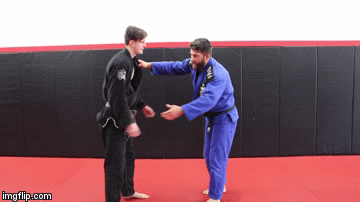
Once the leg is on the hips, get you but as close to your heel as possible and sit down. However, instead of rolling backward, look to keep an extended leg on the hip and go slightly sideways. Your grips will all you break the opponent’s posture. The sideways angle makes it really easy to establish a closed guard. Or any open guard variation, for that matter.
Jump Guard
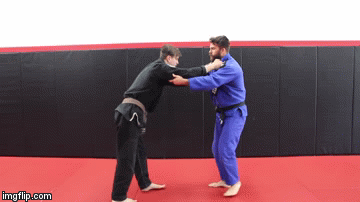
Half Guard Pull
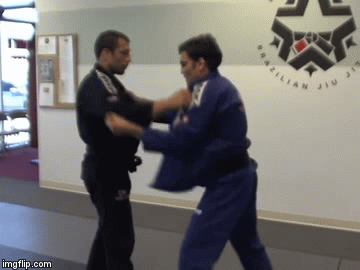
To pull half guard, you’ll need to step in with the leg on the collar control side. You’ll also want to fall a bit towards that side so that your leg can entangle theirs. Once down, lock your feet down and go for the underhook. From there you can go and play your favorite Z-guard, butterfly half or whatever variation you favor.
Web Guard Pull
The web guard is essentially the spider web position. Getting there when hunting for armbars is nothing new, but not many people think you can get to spiderweb by pulling guard. To be honest, I have no idea who came up with it. I saw it from Firas Zahabi first, so credit where credit’s due.
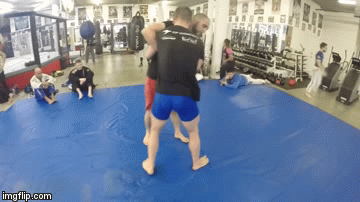
Single Leg X Guard Pull
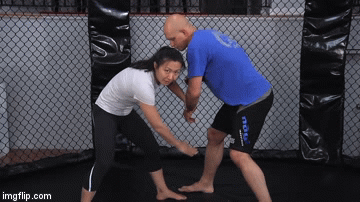
While holding the grip, you’re going to walk your feet in between their legs and get down on your back. USe the grip to pull the opponent over you so you expose their leg even further. From there, you simply shoot your hips up to establish a SIngle leg X guard. And, as you know, leg lock finishes are not very far away!
REVIEW: The Butterfly Half Guard DVD Instructional by Tom DeBlass


![Darce Choke Encyclopedia – Origins, Mechanics and Variations [2025] BJJ, choke, Brabo, BJJ Darce Choke, D'arce Choke, Darce BJJ Choke](https://bjj-world.com/wp-content/uploads/2017/11/JungPoirierLeeYahoo-218x150.jpg)










![Cross Ashi Garami Firas Zahabi DVD Review [2025] Cross Ashi Garami Firas Zahabi DVD Review](https://bjj-world.com/wp-content/uploads/2025/04/cross-ashi-garami-firas-zahabi-dvd-review-218x150.png)


![Ultimate Study Tomoe Nage Neil Adams BJJ DVD Review [2025] Ultimate Study Tomoe Nage Neil Adams BJJ DVD Review](https://bjj-world.com/wp-content/uploads/2025/04/tomoe-nage-neil-adams-bjj-dvd-review-218x150.png)

![Modern Split Squat Passing Jason Rau DVD Review [2024] Modern Split Squat Passing Jason Rau DVD Review](https://bjj-world.com/wp-content/uploads/2024/11/modern-split-squat-passing-jason-rau-dvd-review-324x235.png)
![Best Marcelo Garcia Techniques by Team Marcelo Garcia DVD Review [2025] Best Marcelo Garcia Techniques by Team Marcelo Garcia DVD Review](https://bjj-world.com/wp-content/uploads/2025/02/best-marcelo-garcia-techniques-dvd-review-100x70.png)

![Guard Busters Bill Cooper BJJ DVD Review [2025] Guard Busters Bill Cooper BJJ DVD Review](https://bjj-world.com/wp-content/uploads/2025/03/guard-busters-bill-cooper-bjj-dvd-review-100x70.png)
![Shotgun Aoki Locks Mateusz Szczecinski DVD Review [2025] Shotgun Aoki Locks Mateusz Szczecinski DVD Review](https://bjj-world.com/wp-content/uploads/2025/03/shotgun-aoki-locks-mateusz-szczecinski-dvd-review-100x70.png)



![Bricks Kesa Gatame System Jeremy Brick DVD Review [2025] Bricks Kesa Gatame System Jeremy Brick DVD Review](https://bjj-world.com/wp-content/uploads/2025/02/bricks-kesa-gatame-system-jeremy-brick-dvd-review-100x70.png)


![The Stack Pass Andre Galvao DVD Review [2025] The Stack Pass Andre Galvao DVD Review](https://bjj-world.com/wp-content/uploads/2025/01/the-stack-pass-andre-galvao-dvd-review-100x70.png)
![Trip Throw Dilemma Michael Pixley and Heath Pedigo DVD Review [2024] Trip Throw Dilemma Michael Pixley and Heath Pedigo DVD Review](https://bjj-world.com/wp-content/uploads/2024/10/trip-throw-dilemma-michael-pixley-dvd-review-100x70.png)


![Flow Pressure Kauan Barboza DVD Review [2025] Flow Pressure Kauan Barboza DVD Review](https://bjj-world.com/wp-content/uploads/2025/02/flow-pressure-kauan-barboza-dvd-review-100x70.png)

![Jeff Higgs Self Defense Guard BJJ DVD Review [2024] Jeff Higgs Self Defense Guard BJJ DVD Review](https://bjj-world.com/wp-content/uploads/2024/09/jeff-higgs-self-defense-guard-bjj-dvd-review-100x70.png)
![Crossing and Spinning Steps To Attack Israel Hernandez DVD Review [2024] Crossing and Spinning Steps To Attack Israel Hernandez DVD Review](https://bjj-world.com/wp-content/uploads/2024/09/spinning-steps-to-attack-israel-hernandez-dvd-review-100x70.png)


![Get Off My Legs Gringo Craig Jones DVD Review [2025] Get Off My Legs Gringo Craig Jones DVD Review](https://bjj-world.com/wp-content/uploads/2025/03/get-off-my-legs-gringo-craig-jones-dvd-review-100x70.png)
![Special K Guard Neil Melanson DVD Review [2025] Special K Guard Neil Melanson DVD Review](https://bjj-world.com/wp-content/uploads/2025/03/special-k-guard-neil-melanson-dvd-review-100x70.png)
![Reverse Armlock Magid Hage DVD Review [2024] Reverse Armlock Magid Hage DVD Review](https://bjj-world.com/wp-content/uploads/2024/12/reverse-armlock-magid-hage-dvd-review-100x70.png)
![Gracie Secrets Closed Guard Kyra Gracie DVD Review [2024] Gracie Secrets Closed Guard Kyra Gracie DVD Review](https://bjj-world.com/wp-content/uploads/2024/12/closed-guard-kyra-gracie-dvd-review-100x70.png)
![Don’t Stand Up Chris Wojcik DVD Review [2024] Don't Stand Up Chris Wojcik DVD Review](https://bjj-world.com/wp-content/uploads/2024/11/dont-stand-up-chris-wojcik-dvd-review-100x70.png)
![Arm Bar It All Shawn Melanson DVD Review [2025] Arm Bar It All Shawn Melanson DVD Review](https://bjj-world.com/wp-content/uploads/2025/03/arm-bar-it-all-shawn-melanson-dvd-review-100x70.png)

![Edging Yourself Out Of Danger Craig Jones DVD Review [2024] Edging Yourself Out Of Danger Craig Jones DVD Review](https://bjj-world.com/wp-content/uploads/2024/12/edging-yourself-out-of-danger-craig-jones-dvd-review-100x70.png)